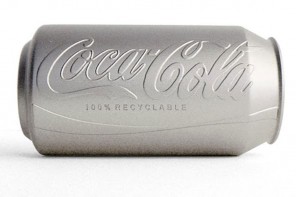Thanks to my friends over at Starke Ayres, I have recently discovered the wonders of Bokashi.
Bokashi is a Japanese term that means “fermented organic matter”. Bokashi is a pleasant smelling product made using a combination of sawdust and bran that has been infused with Effective Micro-organisms (EM). Bokashi has traditionally been used to increase the microbial diversity and activity in soils and to supply nutrients to plants.
By using Bokashi instead of throwing your organic waste into the trash, you are helping the environment by reducing the amount of garbage sent to our landfills as well as providing nourishment to your garden.
The key to success when using Bokashi is the “Bokashi bucket”. Starke Ayres have specially made Bokashi buckets available for sale which allow you to capture the “bokashi tea” which can be used to feed your plants but I like to reuse what I already have so I just used an old bucket. Make sure if you use an old bucket or container, that it has a lid as your waste matter needs to be sealed tightly.
Place your kitchen waste into the bucket, then sprinkle a hand full (similar to the amount of sugar you would sprinkle over your porridge) of Bokashi over the waste, put the lid on and store out of the way. I´ve placed my bucket under the sink. You don´t have to worry about it smelling as the bokashi powder prevents any foul odours. Repeat this layering process until the Bokashi bucket is full. Drain off liquid (Bokashi juice) as necessary and use as plant food in your garden – I don´t really experience any “juice” but I don´t really add any liquid waste matter.
What type of waste should I be adding I hear you ask? Just about everything can be added to your Bokashi bucket – meat, bones, dairy, food scraps including veggie offcuts, fruit peels, pips etc. Once the bucket is full to capacity, the waste can be buried.
If you have two Bokashi buckets, begin the process again in your second bucket. Let the waste from the first Bokashi bucket continue to ferment for 10-14 days or for any additional length of time. Then, bury the waste and wash out the Bokashi bucket so it is ready to use when your second Bokashi bucket is full. If you have only one Bokashi bucket the waste can be buried as soon as it is full, obviously the waste on the top has not had much or any chance to ferment, even so, the waste will still break down quickly because of the micro-organisms mixed in.
With two Bokashi buckets the waste gets extra time to ferment, you will get more of the valuable Bokashi Juice and it is more convenient, however, this wonderful composting system will still work with just one Bokashi bucket.
Bokashi compost will look different to other compost that has decayed. As the food waste does not breakdown or decompose while it is in the bucket, much of its original physical property will remain and it will have a pickled appearance. Breakdown of waste will occur after it has been transferred to the soil.
Burying Bokashi Compost
Burying Bokashi waste in the soil will supply the plants with a nourishing food source and condition your soil with enriching microbes. The micro-organisms in the Bokashi mix significantly accelerate the composting process.
Dig a hole or trench approximately 20-25 cms deep. Add your Bokashi waste and mix in some soil, cover with remaining soil.
Bokashi waste can be added to a conventional compost bin. If you live in an apartment you can also make use of Bokashi. Once your bucket is full, just pop downstairs and bury the contents of your bucket in the building’s grounds, I’m sure your groundsmen will be pleased as you’ll be making their job easier. Your neighbours may think you’ve taken on a second career as a serial killer and are burying evidence but at least they wont complain about the noise at your next gathering!
Watch the below video for a demonstration on how to bury the contents of your bucket.
Below are also a few images of my first Bokashi burial!

My bokashi bucket with the bokashi sprinked on top



Digging the hole




Must love dogs
If you have dogs then you will love the wonders of Bokashi even more. Bokashi can also be used to decompose your dogs poo. I used to be like most people and pick up the poo, put it in an old plastic shopping bag and chuck it into my black wheelie bin once full. Not anymore! Now we dig a hole 20-25cms (we have 3 big dogs = LOTS of poo!) empty the poo into the hole, sprinkle some Bokashi over it and cover it up. See images below but BEWARE they are not for the faint hearted!! I have not dug it up yet to witness the fermentation process yet as it has only been about a week or so (I want it to have broken down quite a bit before taking a peek) but will check on it in the next few days and let you know! Take note: If you have a veggie garden at home, dig your “Bokashi poo hole” on the other end of the garden. Food for thought: I do have to wonder if we use compost (usually cow dung) in our veggie gardens could we not use dog dung as well?!?!

Dog poo hole with Bokashi on top

So head down to Sta
rke Ayres now and grab your very own Bokashi bucket and powder and start composting. You will never look back, your garden will love you for it (so will the landfills) and you will wonder how you ever coped without Bokashi in the first place!
Happy composting
xx








